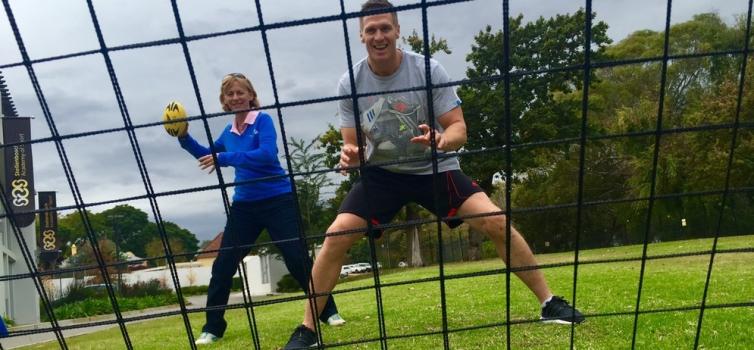Bournemouth pioneer use of Sherylle Calder's EyeGym

Written by Simon Austin — March 8, 2017
WE’RE used to hearing that great players have great ‘vision’. So why isn’t vision trained at most football clubs?
South African Dr Sherylle Calder has been the leading visual awareness coach for the last three decades. Her imprint is on many of the greatest sporting triumphs and her client list reads like a who’s who of global stars. Eddie Jones brought Calder on board with the England rugby team earlier this season, having previously worked with her for the Springboks and Japan.
The Australian says she gives teams the 'X-factor'. So it's surprising that football clubs feature only fleetingly on Calder's glittering CV.
There was a spell with Bafana Bafana when they won the African Cup of Nations in 1996; with Mick McCarthy's Wolves, when they were promoted from the Championship in 2009; and with the Spurs academy. Up until last season, the former hockey international had never coached a Premier League first team though.
That changed when an email arrived in her inbox from compatriot Dr Craig Roberts, the former Springboks team doctor who is now head of Sports Science and Medicine at Bournemouth.
“Starting in football, I realised there was a big opportunity to use what Sherylle does,” Roberts, who joined the Dorset team in 2015, told TGG. “A lot of people say visual awareness is innate, that if players don’t have those decision-making abilities or visual motor processing abilities then they wouldn’t be at this level.

“That’s true – but you can get even better. The more you train these skills, the better you will get. Even the players who are really good can get better. That’s the message I’ve been trying to get across.”
Calder was handed the task of improving the visual awareness of the club’s eight full-time goalkeepers – four of them are in the first-team squad, four in the academy - with the expectation that her remit will extend to the outfield players next season.
“The important thing initially was to get something in place – we didn’t want to do too much too quickly,” Roberts explained.
Visual awareness is a three-step process.
“You’ve got see it, make a decision, then have an action," Roberts said. "That whole pathway can be trained. The more you train, the faster it becomes – you see things quicker, you react quicker, you make the decision quicker.”
Calder visited Bournemouth’s training centre for an initial assessment at the start of the season, then for a review at the beginning of February. The rest of her work was done in the ‘EyeGym’ – an online training programme that trains hand-eye reactions, 'eye skipping', eye speed and concentration among many other skills. Players were encouraged to do 10 minutes' work in the EyeGym a day, with Calder monitoring the results from her Stellenbosch base.
She relayed the results to Roberts, goalkeeping coach Neil Moss and Head of Sports Science Dan Hodges on a regular basis, and the programmes were tailored if necessary.
It’s fair to say the younger keepers proved more enthusiastic students than their older counterparts.
“The buy-in hasn’t been fantastic with them [the older goalkeepers],” Roberts admitted. “They have worked with Sherylle – and are still working with her – but not as conscientiously as I would have liked, I have to be honest.
“The older keepers have a system that works for them – ‘this is what I do, this is what works for me’ – and it’s about slowly changing that culture, as there is actually always more you can do. That is what we are trying to do at the moment.”






-1.png)





